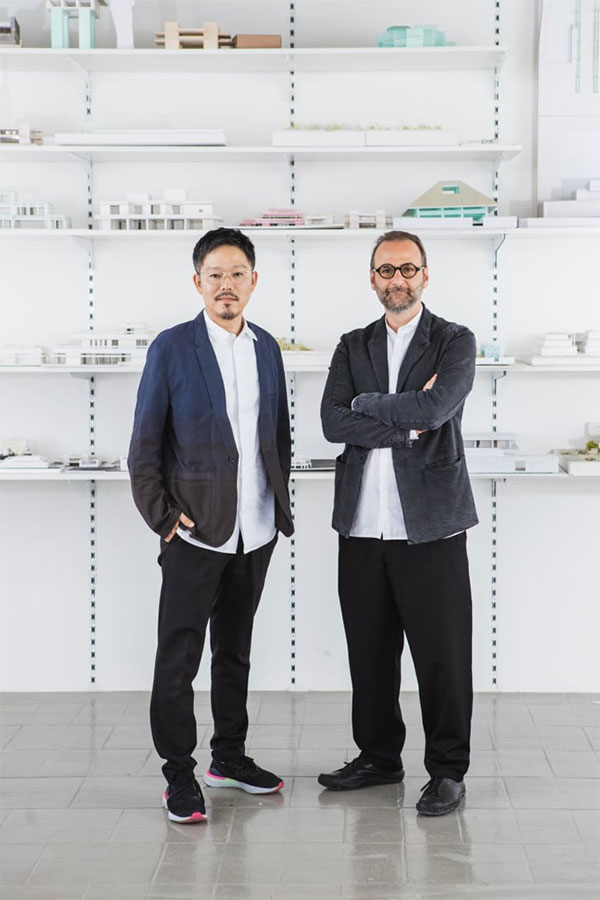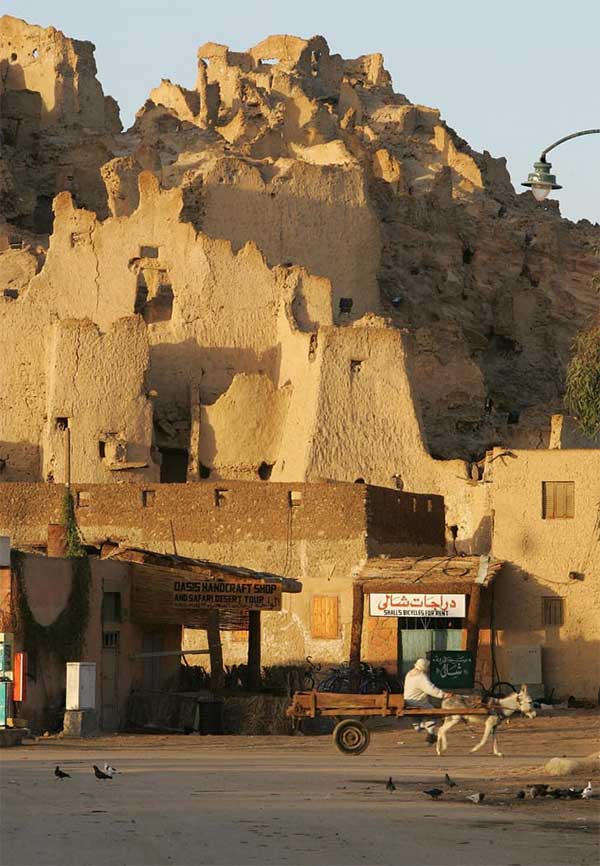Breakthrough ideas for making cement from waste salt
According to CNN (USA), Wael Al Awar and Kenichi Teramoto, two main architects of waiwai design company, have used the scientific knowledge of UAE and Japanese universities to make cement from brine by discharging desalination plants in the UAE.

Architects Kenichi Teramoto and Wael Al Awar. (Image: National Pavilion UAE)
They came up with this idea when they saw the desert area containing salt (sabkha) in the UAE. This area is vast in the UAE but is often overlooked.
Sabkha has been used in previous architecture. Centuries ago, salt was taken from this desert region to make bricks to build the medieval town of Siwa in Egypt near the Libyan border. But architects Al Awar and Kenichi do not use salt from the sabkha ecosystem but use waste salt water containing many of the same minerals.

Ancient Shali fort in Siwa, Egypt. Siwa has buildings built of salt materials. (Image: Getty Images).
The UAE is one of the largest desalination countries in the world due to scarcity of fresh water. It produces about one fifth of the world's salt water as a by-product of desalination, or about 28 million cubic meters per day.
However, bringing this waste salt water back into the sea could harm marine life. Therefore, finding ways to use waste salt has become one of the national focus. Earlier this year, the UAE launched a $ 930,000 'Challenge to Think Again about Salt Water' .
Salt water contains magnesium minerals. Kemal Celik, an assistant professor of civil engineering at New York University in Abu Dhabi, extracted magnesium compounds from brine and used to make cement. Celik said cement was cast into blocks and then put into CO 2 furnaces to speed up the production process. Cement is tested in the UAE and then sent to Japan. Here, cement blocks undergo experiments on hardness and durability. In addition, they also set up algorithms to calculate the safety of salt cement that will be used in construction.

Close up of a salt desert area in UAE. This area has bacteria that can absorb CO 2 . (Photo: waiwai).
According to Al Awar, prefabricated cement blocks can be used to build single-storey houses, but he and architect Kenichi hope to develop more products to use in building multi-storey houses.
Al Awar said its magnesium cement could be as effective as Portland cement , which uses calcium carbonate as a raw material and is the most common cement in the concrete industry.
However, magnesium cement also has limitations. As a product of salt, it can corrode steel . But if other materials are used, magnesium cement can be used.

Prefabricated salt cement blocks were created by Al Awar, Kenichi et al. (Photo: waiwai).
Professor John Provis of the Department of Materials Science and Engineering at the University of Sheffield in the UK thinks that salt cement is a really good idea. He said only 1/3 of cement is used in reinforced concrete globally so the problem of steel corrosion is not worrisome.
Al Awar said he and his colleague Kenichi look forward to building more eco-friendly and sustainable architectures. He said: 'Because of the global CO 2 emissions and global warming - issues that have been alarming for years, we have a duty and a duty to act.'

Precast concrete blocks are melon into the CO 2 furnace . (Photo: waiwai)
According to the International Energy Agency, cement production often consumes a lot of energy and emits many toxic emissions. Cement industry sector energy consumption is the third largest in the world and contributed 7% emissions CO 2 worldwide.
In May 2021, Al Awar and Kenichi will hold the UAE national pavilion at the Venice Biennale Architecture Exhibition and bring magnesium cement to display here. The booth will be made from magnesium cement, although not from a brine cup. They said they are still working on this type of cement, but it is optimistic.
- Cement holds safe nuclear waste for 100,000 years
- Mexico invented eco-cement made from glass chips and garbage
- Green cement
- Why is cement a powder but when mixed with water, it is as hard as stone?
- Are we eating plastic waste daily?
- Future iPhone made from cement?
- Discover the unique technique of making Agehama salt
- The unexpected benefits of salt water
- Novacem Cement will replace Portland cement?
- The formula makes the new type of cement reduce the amount of CO2
- Cement is smart to withstand both bombs
- Scientists first made cement in the universe
 Is the magnetic North Pole shift dangerous to humanity?
Is the magnetic North Pole shift dangerous to humanity? Washington legalizes the recycling of human bodies into fertilizer
Washington legalizes the recycling of human bodies into fertilizer Lightning stone - the mysterious guest
Lightning stone - the mysterious guest Stunned by the mysterious sunset, strange appearance
Stunned by the mysterious sunset, strange appearance